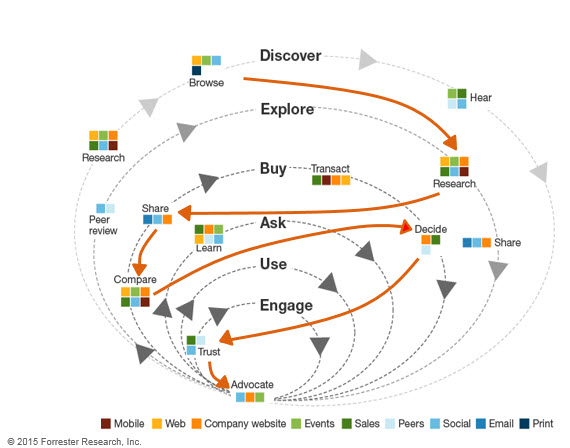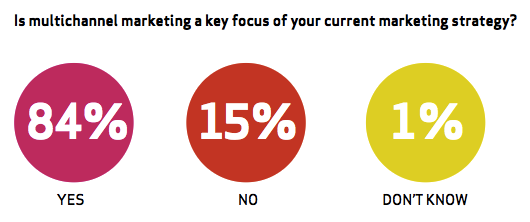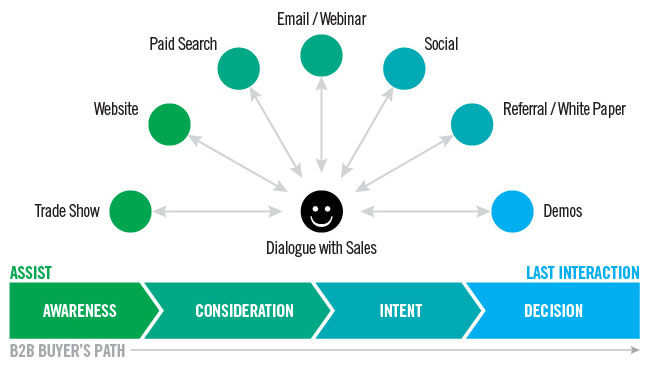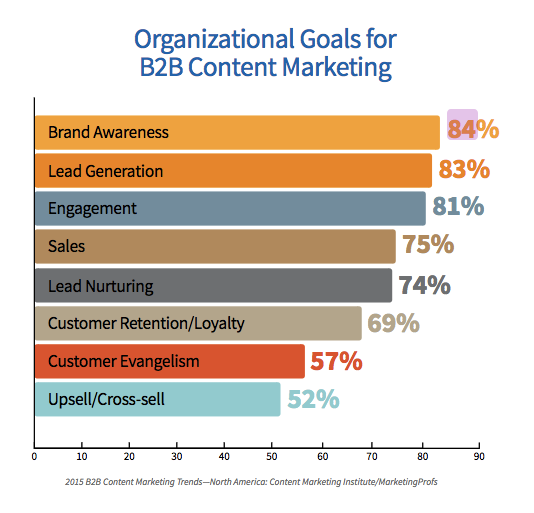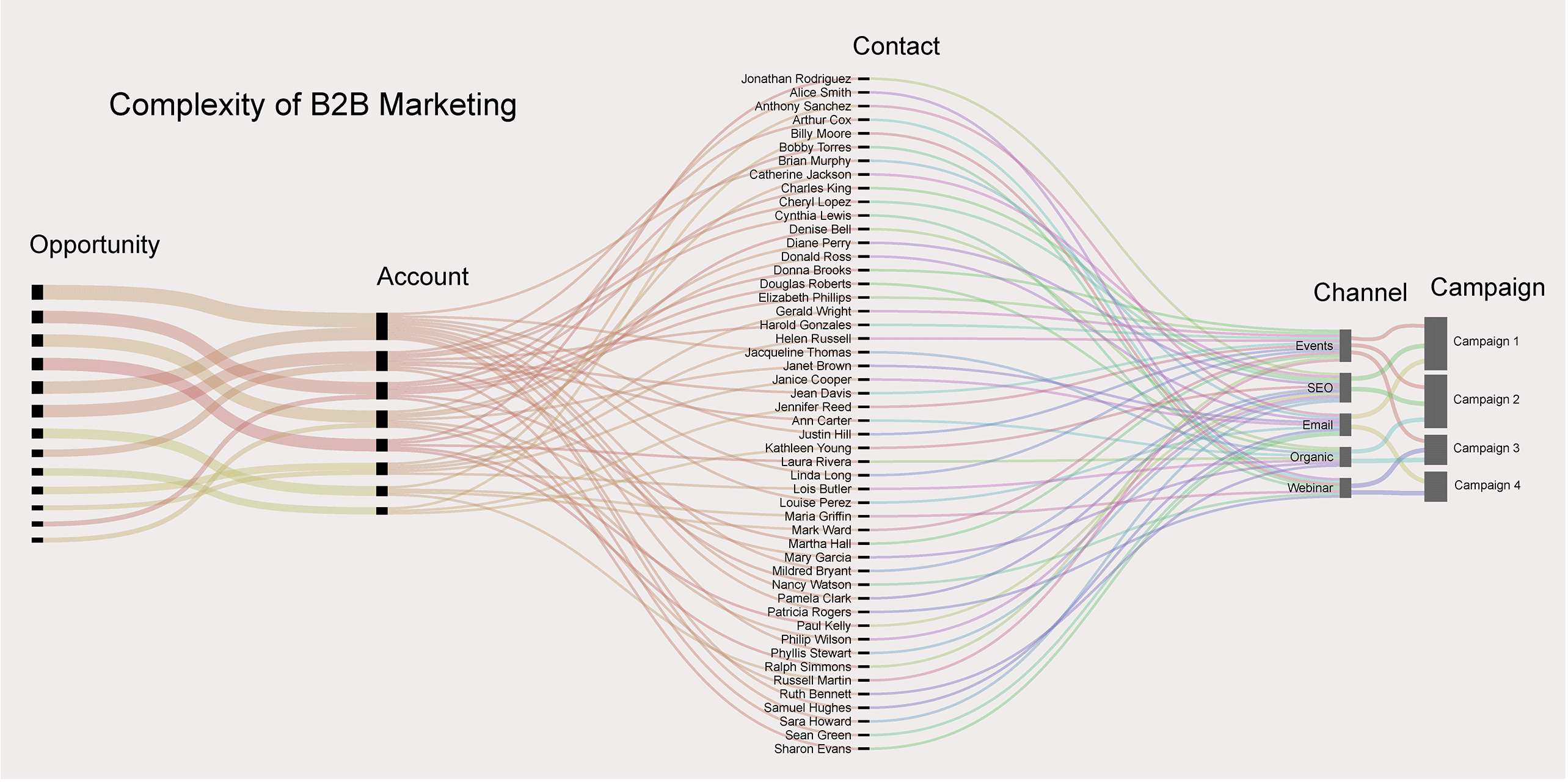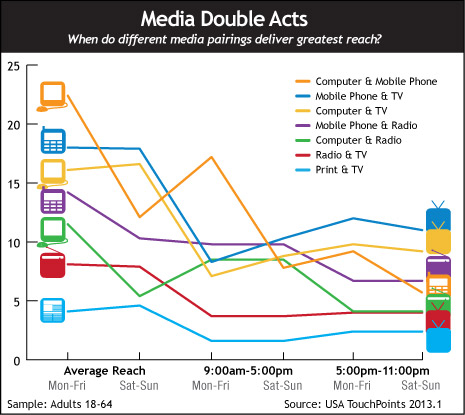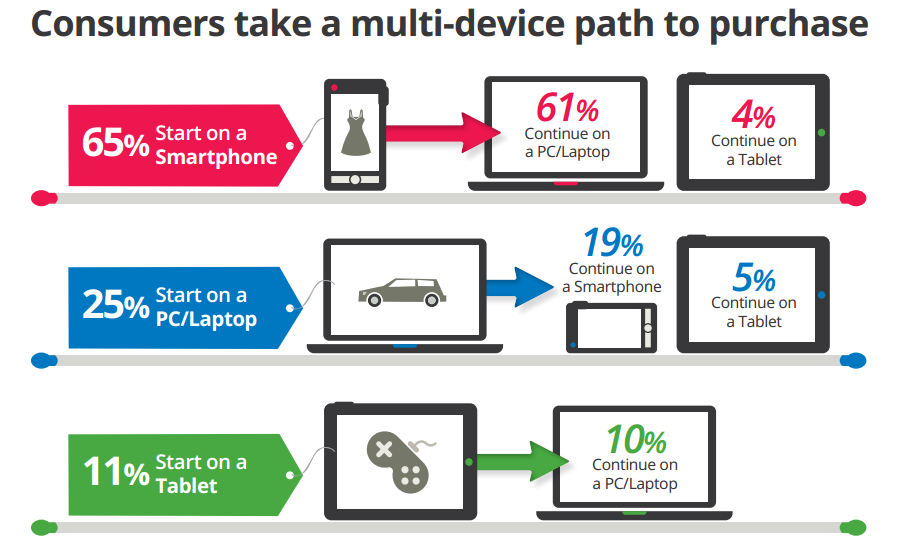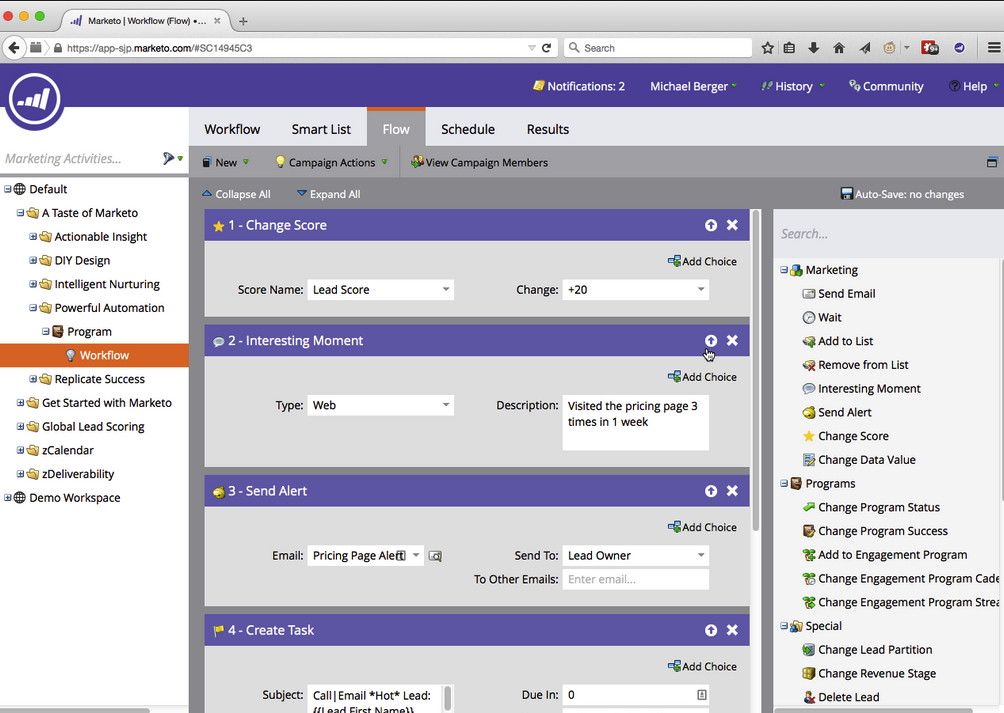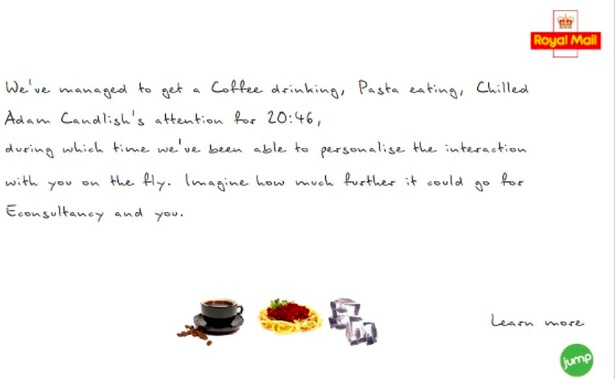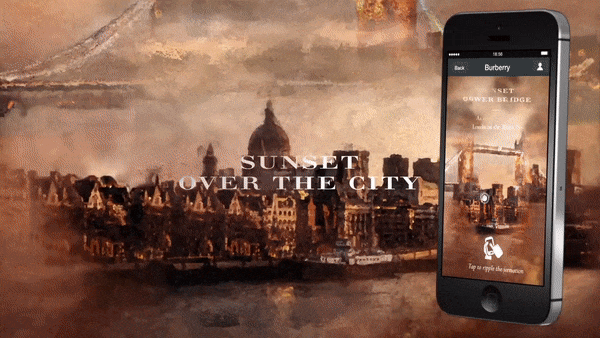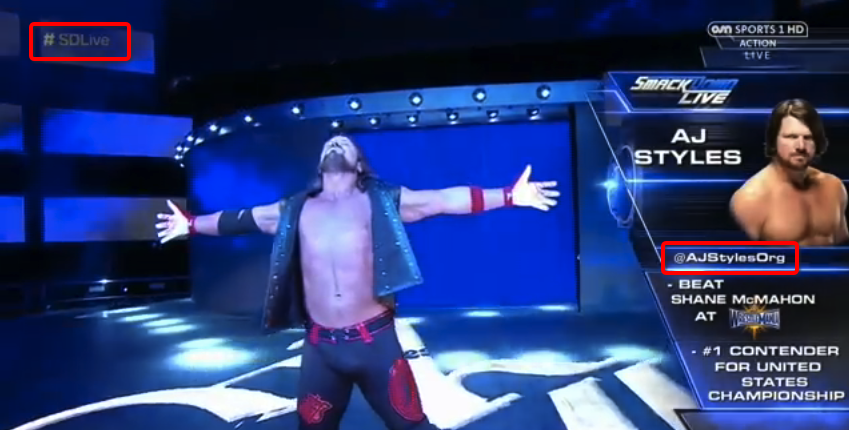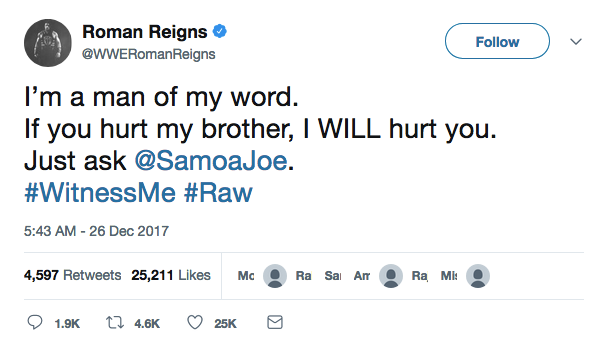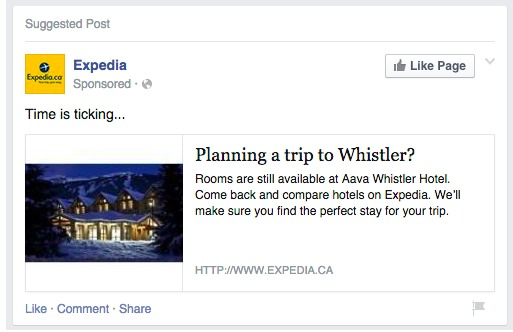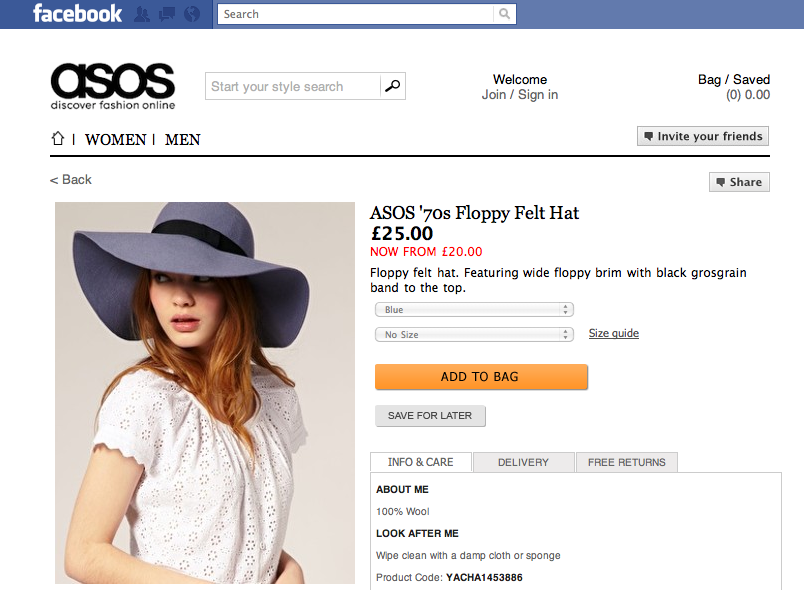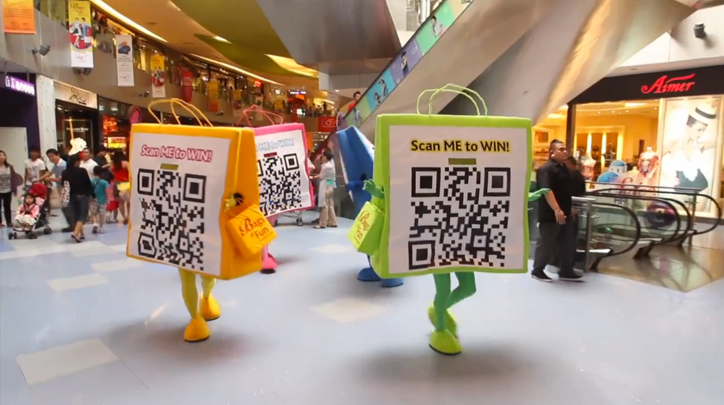There’s a reason why you’re never more than five streets away from a Dunkin Donuts in Manhattan. The more locations, the more opportunities Dunkin Donuts has to sell you a syrupy shot of caffeine.
Being visible in different locations means more visibility, awareness, and opportunities to buy.
On the internet, this is synonymous with expanding your reach from just a website to multiple channels: SEO, email, social, PPC, and more.
There are many places to reach your target market, so putting your budget into a single channel is like building one huge Dunkin Donuts in the center of town and hoping everyone will go there instead of the local corner competitor.
Today, there is an average of 5.4 stakeholders involved in any given B2B sale. And, prospects are much more educated — 90% of the buying process is over before a prospect ever speaks to a salesperson:
(Source)
Your ideal customers are on Facebookand LinkedIn, searching on Google, opening your competitor’s emails, attending events, watching webinars and engaging with brands across many different touchpoints.
Today, 72% of consumers say they would rather connect with brands and businesses across multiple channels. Companies need to take a step outside the traditional marketing silo and look at a more integrated approach.
The solution? Multi-channel marketing.
Today, 84% of companies have made it a key focus in their marketing strategy:
Multi channel customers spend 3-4 times more than single-channel customers. And, 74% of businesses increased sales with a multichannel strategy, while 64% increased consumer loyalty/acquisition
In this post, I’m going to explain what multichannel marketing is, why B2B marketers need to be using it, and show you some great examples of multichannel marketing campaigns.
First up…
What Is Multichannel Marketing?
Multichannel marketing refers to the practice of engaging prospects, leads and customers across a combination of indirect and direct communication channels. A channel could be a device, medium, or network. For example:
- A physical store
- Website
- Mobile
- In-app
- PPC
- Social
- Direct mail
Multichannel marketing is important for the simple reason that you must be where your customers are. Which is everywhere.
Ideally, a prospect targeted by a multichannel marketing campaign would get a seamless experience across all the different touchpoints. This could be as simple as not getting emailed about a white paper if they’ve already downloaded it through a Facebook ad, or it could be laser-targeted behavioral messaging delivered based on a combination of touchpoints across platform.
Buyers are in complete control of the sales process. There are more channels, more devices, and more options available when it comes to finding the information they need to make a purchase decision.
While this stratification makes marketing more challenging, it also presents a massive opportunity for companies who are willing to adapt.
Why Is Multichannel Marketing a Big Deal for B2B Marketers?
According to a 2015 study by Lewis, just 9% of marketers worldwide will not increase spending on multichannel marketing. Put another way, nine out of 10 marketers planned to invest more in a multichannel marketing approach.
Here are some of the reasons why marketers are ramping up their investment:
Increase brand awareness
Building brand awareness continues to be a major organizational goal for B2B content marketers. In fact, 84% say brand awareness is the #1 priority:
But, here’s the kicker:
It takes an average of five to seven impressions for someone to remember your brand. More channels equals more impressions.
It’s the reason Nike still bothers to pay for pitch side ads: everyone on the planet knows Nike, but if they ignore that channel its users could find another brand.
Multichannel marketing is as much about engaging existing leads and customers as it is about reaching new prospects.
Increase conversions
According to Referral Saasquatch, being on the same channels as your customers “directly aligns your brand with higher levels of engagement and conversions”. It makes sense. If you’re in the right place at the right time, a targeted message could tip the lead over the edge and convert them into a customer.
Increase revenue
90% of marketers report higher profits and sales with multichannel strategies. More purchase opportunities across different channels means customers can purchase more readily.
According to CMO by Adobe, 52% of multi-channel marketers say they “usually” or “always” hit their financial targets.
Deeper analytics
It’s not enough to be looking at anonymized analytics or a list of email addresses, open and click rates — you want progressive lead profiling, enriched by data from multiple channels. That way, you can accurately track campaigns, properly map the lead journey and send targeted messaging on the right channels.
Multi channel marketing can provide a full view of your customer’s digital ecosystem, allowing you to distribute your most engaging content to their favorite channels.
Keep Up With Today’s On-the-Go Users
Multichannel marketing allows you to reach users across mobile, desktop, email and social channels throughout the daily journey – commute to work, at the office, at home in bed, sitting shotgun in the car, and so on. GPS and real-time location services allow marketers to get hyper focused with campaigns.
Better customer insights
Every channel and touch point provides customer insight. Tracking how users interact with your brand across all channels will teach you more about their preferences so you can better personalize the content experience.
A SAP report reveals that a businesses believe a multichannel approach:
- Improves sales (74%)
- Increases customer loyalty and acquisition (64%)
- Improves competitive advantage (62%)
- Improves customer experience (54%)
But, it’s Not All Smooth Sailing…
Whether it’s the wrong technology, lack of experience, or simply bad execution, almost all marketers hit a snag when it comes to multichannel marketing.
Over 90% of marketers struggle to seamlessly connect more than three channels throughout the buyer journey. — Gartner
Here are some of the most common multichannel marketing challenges:
Targeted Messaging
Delivering the message is not enough. It must be fit to audience preferences and factor in demographic, behavioral and transaction history, channel preference and geography. Delivering the right message across so many touchpoints has added another level of detail to an already complex B2B buyer journey.
Attribution Modeling
It’s beoming more complex to determine which channels, messages, and sequence of touchpoints are delivering the most qualified leads to your organization. Having a system in place to properly track all the moving parts, and distribute credit where it is rightfully deserved is critical to maximizing the ROI of your multichannel marketing campaigns.
Campaign Synchronization
Customers are in control of the buying process. Therefore, marketers need to constantlty develop, test, and refine messaging across multiple touchpoints to ensure prospects and leads are being properly nurtured through each stage of the sales funnel. Messaging needs to flow, and make sense across channels, mediums, and devices. A broken link could cause the entire campaign chain to collapse.
Let’s go through the key tenets to make sure your multichannel marketing strategies are dressed for success.
Key Tenets of a Successful Multichannel Marketing Strategy
Executing a successful multichannel marketing strategy isn’t easy. It takes a lot of planning, data, and solid execution.
While every campaign is different, there are a few key tenets that underlie every successful multichannel strategy.
Be on the right platforms
You need to adjust to consumer behaviour by offering a seamless experience between preferred platforms:
The graph above shows the popularity of different devices (channels) paired together, and their reach at different times of the day.
As you can see, the transition between desktop and mobile is an important one — this trend, which gained steam with the rise of cheap mobile internet, is the reason why websites should always be responsive. This point is emphasized in ecommerce. Just because a consumer or business adds something to the cart on their desktop device doesn’t mean they’ll click purchase on it:
Apply this mobile-first mindset outside your website. Does the content you’re retargeting Facebook users with work well on mobile as well as desktop? (90% of Facebook’s daily active users access it via mobile.) Define your channels before launching the campaign, and be sure to test every touchpoint from every possible device and channel.
Integrate systems to build a comprehensive avatar
According to American Management Association, 83% of executives think their companies have silos, and 97% think it’s having a negative effect on business. Silos are created by communication breakdowns, whether that’s human-to-human or data that isn’t accessible to other applications.
To pull all customer information into one place and execute a successful multichannel marketing campaign, it means breaking down barriers between different branches of the marketing department, and integrating your marketing tools.
You can use a tool like Zapier to automate the transfer of data between your SaaS tools, or build custom integrations with the APIs of the software you use.
Automate personalized messaging
Personalized marketing generates 2x higher click-through rates. And, 71% of consumers prefer personalized ads. Leveraging data from a variety of channels will allow you to deeply personalize messaging based on the user’s activity and personal information.
That said, the ability to capture lead data and draw actionable insights at scale is dependent on the software you use. Specifically, a central hub of data stored in a marketing automation tool like Google Analytics 360 Suite, Agile CRM or Marketo:
With data from all sources at your disposal, you can send marketing emails when prospects click Facebook ads, or well-timed chat messages informed by a history of customer preferences and activity.
This breaks down the barriers between channels, and allows you to deliver real personalized messages that cut through the noise.
Real World B2B Examples to Inspire Your Multichannel Marketing Campaigns in 2018
Multichannel marketing is a topic so huge and general it’s easy to get bogged down. Let’s shine a light (and give you inspiration for your next campaign) with these real world examples:
Econsultancy’s direct mail and online interactive campaign
This genius campaign was specifically created for Econsultancy to show off the power of personalized, interactive marketing.
The first channel was an interactive quiz that gathered a few personal points and logged the user’s name and time on site. From that, Econsultancy mailed conference invitations with a personalized message and URL:
Out of the 867 recipients, there was a 33% response rate. Over one fifth of respondents requested bookings, and there was a 56% conversion rate!
Imagine a conversion rate like that from using an impersonal message over a single platform.
Burberry’s interactive WeChat campaign
This campaign really moved the needle for Burberry, increasing sales 4% across the board by marketing just a single product — a $2,000 designer handbag.
The campaign was centered around a live event in Shanghai, and delivered through the Burberry’s WeChat app. By interacting with the brand on WeChat, event attendees and viewers of the event’s live stream were able to find out more about the products in real time, as they were being displayed live.
Burberry also uses the WeChat platform to deliver interactive content that helps promote their upcoming events:
This expands the customer experience from digital to physical, and effectively gives Burberry a way to constantly deliver relevant content to its customers.
WWE integrates TV events with conversation over Twitter
In 2011, the WWE started putting wrestler’s Twitter handles underneath their names when they entered the ring:
This was part of a huge push to use Twitter as a user-fuelled promotional tool. Wrestlers now take their theatrical feuds online, letting fans engage in real time as they trash talk each other:
Since the company turned its sights on Twitter, it has built up a huge following of over 10M followers which powers its premium streaming service, live events, and the social presence of it’s wrestlers.
Today, WWE hashtags are constantly trending on Twitter, which increases brand awareness and exposes new viewers to the sport.
House of Fraser set up an internet-only retail store
House of Fraser, a British department store with a strong online presence, set up the first internet-only retail location in 2011 where high street shoppers could order products online through the in-store computers, and return to collect them:
(Source)
The store itself is like one big billboard. In a backwards approach, the store is used as a vehicle to increase brand awareness and generate online sales. The internet retail store helps customers by providing a place where they can try on newly-arrived clothes and return them straight away if they don’t fit.
This multichannel marketing strategy combines brick-and-mortar retail with the convenience of internet shopping, reducing friction for the customer.
Expedia delivers laser-targeted ads to prospective travellers
46% of search marketing professionals believe retargeting is the most underused technology. Ads that retarget visitors that have proven interest in your product have a 10x higher conversion rate.
In the image below, Expedia shows us why it works so well:
(Source)
Expedia shows these kinds of ads to website visitors who have clicked on hotels or travel packages in specific locations. This ad is personalized, and uses urgency to push engaged users to convert.
ASOS’s social strategy creates a seamless shopping experience
Aiming to create the most frictionless shopping experience for its Facebook fans, ASOS launched Europe’s first integrated Facebook store in 2011. Users are able to shop for ASOS products directly inside the application:
(Source)
Sales through the Facebook store surpassed £1 million from launch to December of the same year, more than doubling the company’s forecasts.
ASOS has also generated buzz while promoting a one-hour Skype call with a fashion consultant:
ASOS is a master of multichannel campaigns, seamlessly integrating each channel and finding innovative ways to engage customers wherever they are.
VivoCity Mall used QR codes to build its Facebook audience
QR codes are an excellent way to convert an offline impression to online engagement. By placing them in high foot traffic locations, you can generate more website visitors, app downloads, and other online conversions. But, there’s got to be some form of incentive.
These two colorful characters advertise entry to a contest, but entry is priced at the cost of one Facebook like.
This campaign doubled the mall’s Facebook following, allowing them to advertise exclusive promotions to a larger online audience and bring them back into the store.
Recap: The Keys to Multichannel Success
In order to accommodate a changing buyer journey, marketers are going to have to embrace a more integrated multi-channel approach.
Here are the keys to succeed:
- Plan a marketing campaign with multiple touchpoints. You might be starting out with interactive online content and moving on to send personalized direct mail, or running a retargeting campaign on Facebook. Think about the different stages of the user journey, and how best to market on each channel.
- Centralize data from every marketing channel. Your marketing technology should pull in data from every channel, forming a complete customer portrait you can use to deliver more targeted marketing messages.
- Refine the number of channels. Are you pushing your offline audience to sign up to your marketing emails, or targeting people that use their mobiles while watching TV? Double down on the channel combinations that work to avoid diluting your budget.
- Run A/B tests. Multichannel marketing relies on a lot of data for successful execution, but it also generates a ton. Use that data to determine whether customers that engage across multiple channels are worth more, or more likely to convert.
- Use automation (but keep the human touch). It’s tough to scale personalized marketing, so businesses will need to rely on automation to reach their audiences. With user data pouring in from social networks, email marketing, and more, you can build automated campaigns with a high degree of personalization and deliver them through the right channel at the right time.
